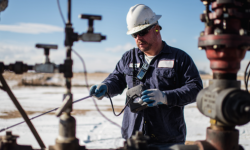Employee wellbeing revolves around five pillars of work and life, advisory firm EY’s executive director Louise Rolland says.
Without them productivity falls dramatically and can affect everything from happiness to life expectancy.
Rolland, a former professor of Work and Ageing at Swinburne University, has spent decades researching wellbeing, productivity and the impacts on the workforce and, based on Finnish research, names these five pillars as health, work, finances, values, and family and community. And if people are not happy at work, their whole lives can suffer.
“Wellbeing is an individual responsibility but organisations that create an environment where people can understand their own wellbeing priorities in the context of work, and can manage those priorities effectively, will realise productivity benefits for the organisation and life outcome benefits for the individual,” Rolland told a Committee for Economic Development of Australia forum.
Workforce wellbeing is more than gym memberships and health checks, Rolland says, and relates to good management, a healthy environment with light, fresh air and movement, values and purpose, and support around family needs and community connectivity.
While at Swinburne Rolland researched the ageing workforce and says the need to extend a person’s working life to sustain a strong economy has been known for more than a decade, but older workers face barriers such as low morale, anxiety and low levels of wellbeing in the workforce.
She says that according to the Australian Bureau of Statistics, one third of Australians retire early because of poor wellbeing and while it is an issue for companies not wanting to lose talent, it is also difficult for people who do not want to leave their job but feel they need to because they no longer have the capacity to work.
Her team’s research led her to look at what programs were being offered in Australia and overseas, and in particular the Finnish Institute of Occupational Health and its 30-year longitudinal study on workforce wellbeing.
She says a person’s positive and negative experiences at work while they are mid-career affect their retirement and at worst, their life expectancy, as shown in the longitudinal study.
“(For) the people who had good levels of wellbeing mid-working life, when they were between the ages of 75 and 84 they were more likely to still be alive, more likely to be living independently and less likely to be drawing on health and social services,” she says.
“That starts to indicate the level of return to the community of managing wellbeing across working life.”
Rolland says how a person feels at work correlates most highly with their overall wellbeing score, and relies on how jobs are designed, physical and psychosocial work environments, and the quality of leadership and interaction.
Workplace abilities and a person’s capacity to undertake particular roles are dynamic across life, she says, and many employers and organisations do not realise how job descriptions change, while workers evolve and move through stages of life.
A recent Hays report found workers would rather feel engaged at work than be given perks, with a survey finding 94 per cent of employees said a clear understanding of how their role helped their organisation was very important.
You can have new light-filled offices, coffee machines, flexible hours and open workspaces, but Rolland says leadership is also critical to how employees feel.
“If you diagnose wellbeing in your organisation it always highlights leadership if there are problems,” she says. “Leaders have to have a consistent approach to what wellbeing looks like and understand what that means.
“Then it comes down to pragmatic and practical actions and using that to form a reference to having good connections with their teams and individuals.”
Rolland says productivity also suffers with low workforce wellbeing. “We know that if people score low on a wellbeing measure that we apply, they have an average of 28 per cent productivity loss,” she says.
Those with low scores have a 70 per cent likelihood of leaving a workplace because of disability over the next decade, and a 10 per cent likelihood of dying at work.
When applied across different industries, Rolland says mining scores among the lowest.
Oz Minerals chief executive Andrew Cole says there is a direct correlation between wellbeing and safety, and when workers are happier and healthier, accidents decrease.
He says his company has spent years refining its procedures and safety protocols to ensure people do not get injured, and the next step is to ensure people come to work in a good frame of mind to concentrate on their job.
Instead of using safety measures as an indicator of injuries, Oz Minerals uses them as an indicator of productivity.
“So much comes back to how we’re thinking and actually feeling in the workplace,” Cole says. “To get to zero (injuries) you’ve got to actually go back to the people, not the programs, not the rules you put in place, not the safety initiatives you put in place — it’s about the people, what are they doing, what are they thinking, how are they feeling, do they come to work motivated, are they distracted?”
However, with more than 6000 safety protocols and procedures in place, Cole says workers are so restricted in what they do, they are less likely to be innovative or creative. He says workers need to be given some leeway and encouragement to try new things, even in a safety-conscious environment such as mining.
“When you talk about innovation in companies you cannot innovate if you’re a compliance-based company, because you’re forced into boxes,” he says.
“You’ve got to innovate, you’ve got to think differently, you’ve got to think laterally.
“There’s quite an analogy between being a great company moving on from being a good company, and innovating and getting safe outcomes, because it does all come back to people.”
Feel good at work and be happier and live longer by Verity Edwards. Available from <http://www.theaustralian.com.au/careers/feel-good-at-work-and-be-happier-and-live-longer/news-story/982eb9421a6639bdcbac7d6f100b4992> [









